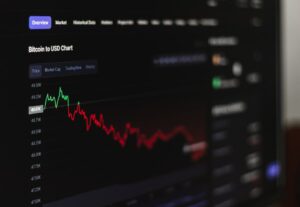Managing Risk with Deviation in Forex: A Guide for Traders
Forex trading, the largest and most liquid financial market in the world, offers countless opportunities for traders to profit. However, like any investment, trading forex carries risk. The key to success in this market lies not only in making profitable trades but also in effectively managing risk. One powerful tool that traders can utilize to analyze and mitigate risk is deviation.
Deviation, in the context of forex trading, refers to the statistical measure of the amount by which an asset’s price varies from its average price over a given period. By understanding and incorporating deviation into their trading strategies, traders can make more informed decisions and protect themselves from potential losses.
There are several ways to calculate and interpret deviation in forex trading. One common method is to use standard deviation, a statistical measure that quantifies the amount of variation or dispersion in a set of values. In forex, standard deviation is typically calculated over a specific time period, such as a week or a month, using historical price data.
Standard deviation can be a valuable tool for traders because it provides insight into the volatility of a currency pair. Higher standard deviation values indicate greater price fluctuations, while lower values suggest stable price movements. By knowing the standard deviation of a currency pair, traders can gauge the potential risk associated with trading that pair.
One way to incorporate deviation into trading strategies is by using it to set stop-loss levels. A stop-loss order is an instruction to automatically close a trade if the price reaches a certain level, limiting potential losses. By setting stop-loss levels based on standard deviation, traders can account for the natural price fluctuations of a currency pair and avoid being stopped out too early or too late.
For example, if a trader determines that the standard deviation of a currency pair is 50 pips, they may choose to set their stop-loss level at 2 standard deviations below the entry price. This would mean setting the stop-loss 100 pips below the entry price, providing a buffer to account for normal price fluctuations.
Another way to use deviation in forex trading is through Bollinger Bands, a popular technical indicator that incorporates standard deviation. Bollinger Bands consist of a middle band, which is a moving average, and an upper and lower band that represent a certain number of standard deviations from the moving average. These bands expand and contract as volatility increases or decreases.
Traders often use Bollinger Bands to identify potential entry and exit points in their trades. When the price reaches the upper band, it may indicate an overbought condition, suggesting a potential sell signal. Conversely, when the price reaches the lower band, it may indicate an oversold condition, suggesting a potential buy signal.
By understanding and incorporating deviation into their trading strategies, traders can better manage their risk in forex. However, it’s important to note that deviation is just one tool among many in a trader’s arsenal. It should be used in conjunction with other technical and fundamental analysis techniques to make well-informed trading decisions.
Additionally, traders should always practice proper risk management and avoid overexposing themselves to the market. This includes setting appropriate lot sizes, diversifying their portfolios, and using stop-loss orders. While deviation can help identify potential risks, it cannot eliminate them entirely.
In conclusion, managing risk is a crucial aspect of forex trading. Deviation, whether calculated through standard deviation or incorporated into Bollinger Bands, can provide valuable insights into the volatility of currency pairs. By using deviation to set stop-loss levels and identify potential entry and exit points, traders can make more informed decisions and protect themselves from potential losses. However, it’s essential to remember that deviation is just one tool and should be used in conjunction with other analysis techniques and proper risk management practices.





